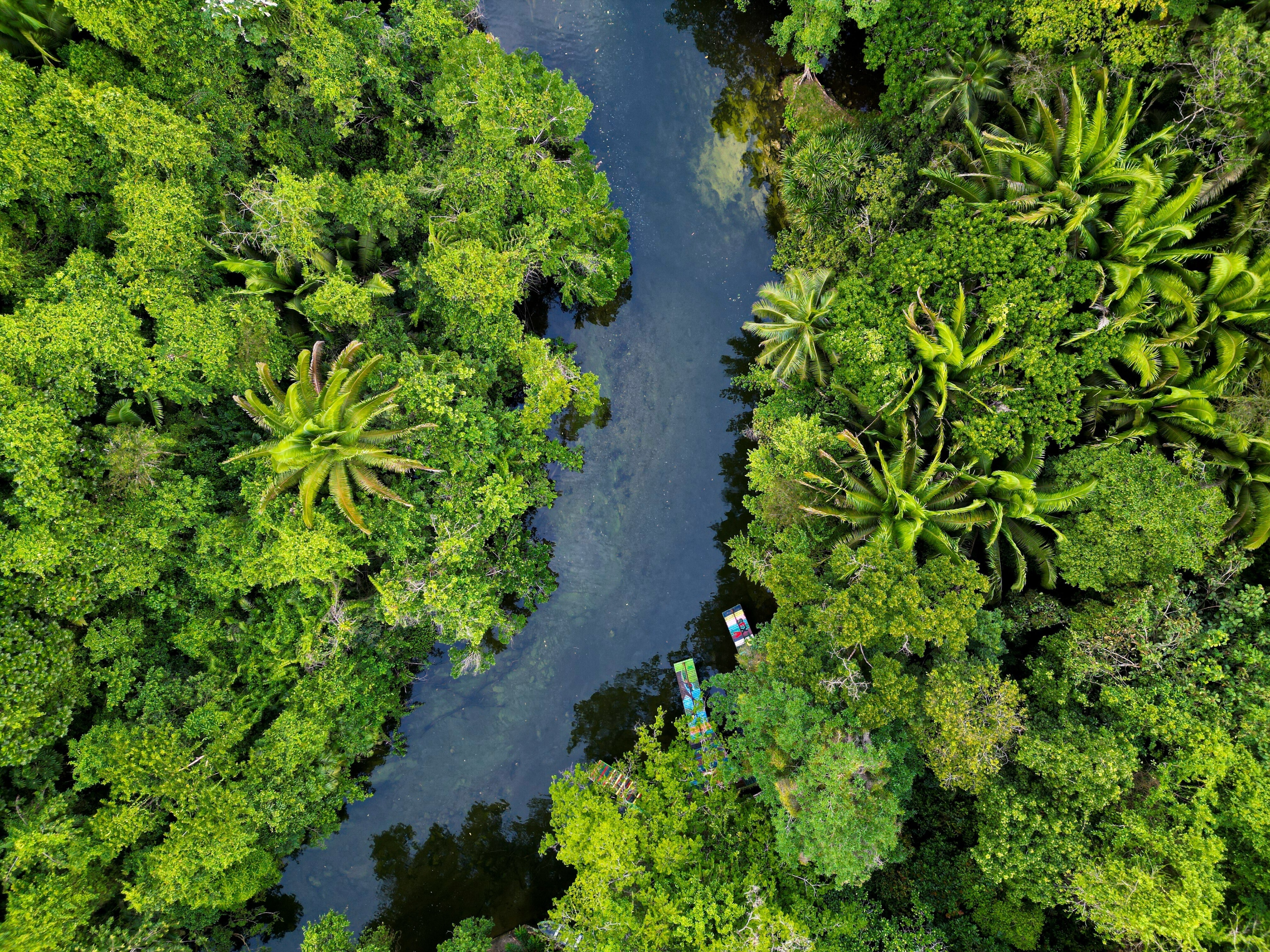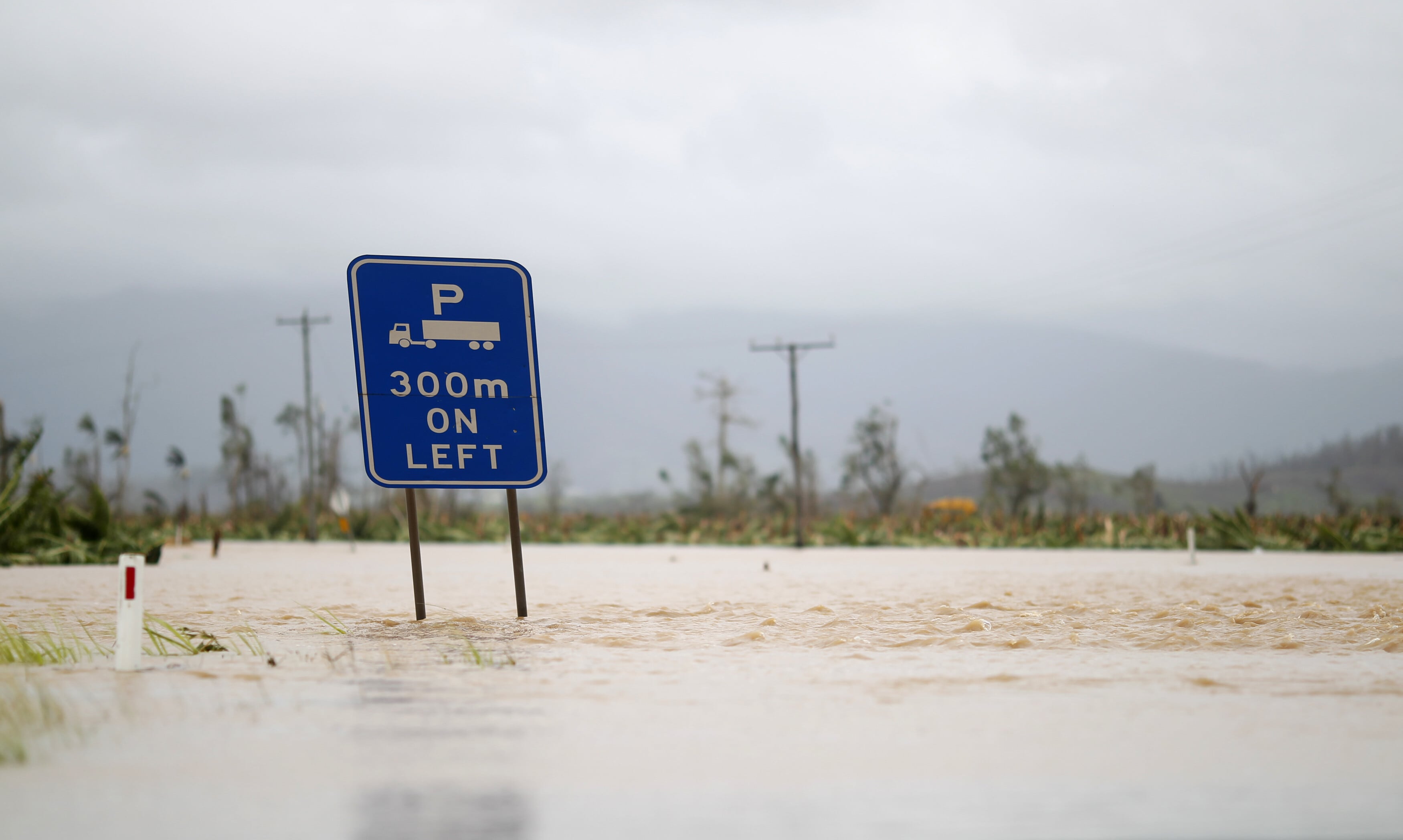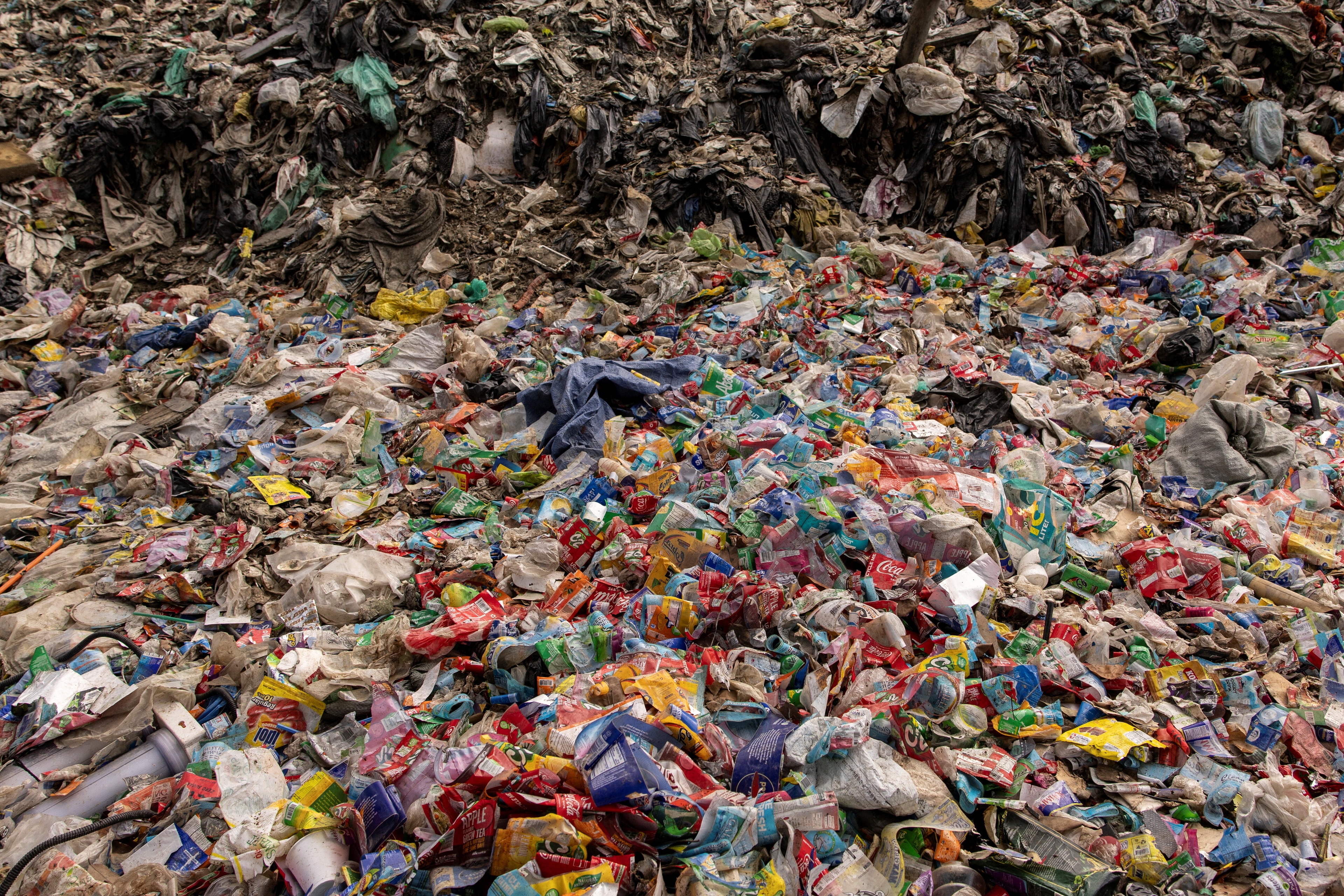Here's how cameras are helping protect the world's rarest gorillas

One of the main reasons why all types of gorillas are going extinct is habitat loss.
Image: REUTERS/Jonny Hogg
Stay up to date:
Science
- Cross River gorillas are Africa’s rarest and most endangered ape, and were once thought to be extinct.
- Camera traps have emerged as a critical tool for monitoring the health and population sizes of the subspecies.
- Recent images have shown multiple young gorillas, which conservationists take as a sign that protection measures are working.
- The images have also helped raise awareness and funding for Cross River gorilla conservation.
Three hop-like steps and a leap, and suddenly Jacob Osang, an eco-guard with the Wildlife Conservation Society (WCS), appears to be levitating above the rainforest floor. With nimble-footed ease, he darts across a moss-covered trunk that bridges a rock-strewn gorge like a fractured bone. But if Osang is fazed by the idea that a chunk of rotting cellulose is all that stands between him and a 15-meter (50-foot) drop, he doesn’t show it.
“It’s my job!” he grins. Osang calls this part of the forest Natural Bridge, and it’s clear why. The fall of this mega tree, now Osang’s favorite camera-trapping site, has rewired the circuitry of the rainforest. In life, the 40-meter (130-foot) hardwood would have pierced the canopy of Mbe Mountains Community Forest in southeastern Nigeria. For perhaps hundreds of years, its sprawling roots would have been a playground for duikers and porcupines, its gnarled branches a climbing frame for mona and putty-nosed monkeys. In its horizontal days, the fallen sentinel now serves a different purpose: It has become a wildlife walkway, a shortcut across the rugged landscape of the Cross River rainforest.
Osang’s camera trap images, set as part of WCS efforts to monitor Mbe Mountains’ unique fauna, have already revealed that Natural Bridge is a highway for hyraxes and a channel for threatened Nigeria-Cameroon chimpanzees. But Osang thinks it might be something even more special: a causeway for the Cross River gorilla (Gorilla gorilla diehli).

Once considered hunted to extinction, the Cross River Gorilla, “rediscovered” in the 1980s, is the planet’s most endangered subspecies of gorilla and Africa’s rarest ape. Experts estimate that its global population totals fewer than 300 individuals, with a transboundary range spanning the rainforest-blanketed borderlands of Nigeria and Cameroon.
All told, some 100 Cross River gorillas are thought to call Nigeria home. About a third of them reside in Osang’s patrol zone in Mbe Mountains, an 8,500-hectare (21,000-acre) community-owned forest corridor connecting two splotches of gorilla habitat. But these numbers are best guesses. And as conservationists’ efforts to protect this genetically distinct ape have redoubled, camera traps have emerged as a critical tool for monitoring the health and population sizes of the Cross River gorilla.
“It used to be that you only saw signs of Cross River gorilla if you spent days or sometimes weeks walking in the forest,” Osang says. “Now camera traps can tell us where the gorillas are and what they are doing.”
Gorillas through the lens
Camera traps have revolutionized the field of wildlife conservation, providing unprecedented insights into the secret lives of some of Earth’s rarest fauna. The motion-triggered devices have been the unsung hero behind everything from a new species of elephant shrew discovered in the Udzungwa Mountains of Tanzania, to the first-ever video of the world’s rarest rhino, the Javan rhino, romping in a mud wallow.
The Cross River gorillas’ own camera trap moment came in July 2020, when news outlets worldwide shared a series of momentous photographs captured by one of Osang’s traps in Mbe Mountains. These showed the first-ever photographs of a Cross River gorilla troop, including shots of several baby and adolescent gorillas.
Accept our marketing cookies to access this content.
These cookies are currently disabled in your browser.
What is the World Economic Forum doing about nature?
For Inaoyom Imong, director of WCS Nigeria’s Cross River Landscape Project, the camera trap images are evidence that conservation efforts in Mbe Mountains are paying off — and a clear sign of a healthy and reproducing gorilla population bouncing back from the brink
“Photos of Cross River gorillas, especially with so many young, indicate that conservation efforts by WCS, local communities and our government partners are successful despite the many challenges that still remain,” Imong said in an email interview.
Challenges the gorillas continue to face in Mbe range from the ongoing threat of hunting and deforestation to the background specter of illegal logging.
Yet while the groundbreaking family group images grabbed the global headlines, they are just a piece in the puzzle of a much larger effort planned by scientists and rangers to use camera traps to understand the stability and size of Cross River gorilla populations.
Previous estimates of Cross River gorilla population sizes have been based on nest counts made over many years. These nest counts are far from perfect. They are tough to collect over undulating forest terrain, and often miss important details about the breeding status of the gorilla population, as young gorillas sometimes share their mother’s nest.
But with gorilla images now captured every few months, both in Mbe Mountains and neighboring Afi Mountain Wildlife Sanctuary, plans are underway for a coordinated camera-trapping campaign that will serve as an updated baseline for testing just how well conservation measures are protecting the Cross River gorilla.
The camera-trapping campaign will involve deploying 50-100 camera traps in systematic grid-like fashion across the three core gorilla habitats in Afi, Mbe and Cross River National Park.
The increased coverage will also provide a watchful eye over the health of individual gorillas.
“In Cameroon, camera traps have shown gorillas with deformed limbs — likely an injury caused by a wire snare,” Andrew Dunn, Nigeria country director for WCS, told Mongabay via email.

Yet beyond the proven monitoring power camera traps provide, conservationists also recognize an unexpected side benefit to the rise of the humble devices: Forest-captured photos have become a lightning rod for attracting conservation funding. And for Cross River gorillas, pixels of primates make people reach for their pockets, it seems.
“Camera trap photos of Cross River gorillas have helped to raise awareness both locally and internationally and to attract greater attention and interest in Cross River gorilla conservation, including funding support,” Imong said.
Dunn agrees that camera trap images of Cross River gorillas have been valuable in securing funding for the subspecies.
“Conservation funding is always needed,” he said. “At one time it was thought that CRG conservation was a lost cause — that the population was too small to be viable and that the threats were simply too great. The camera trap photos have demonstrated that the CRG population is stable/increasing and that, after two decades of efforts by WCS, conservation is working.”
Mbe Mountains’ most important piece of plastic
Back at Natural Bridge, Osang jumps from the suspended trunk back to solid ground, a camera trap in hand.
Whereas some rangers carry guns and others machetes, Osang carries a paintbrush. With deft brushstrokes, he dislodges an ant colony nestled in the corner of the camera trap and slowly extracts the SD card.
“One month of photographs are stored on this. If there are gorillas captured, then maybe this is the most important piece of plastic in Mbe!” Osang says.
Osang places the SD card safely into a tobacco tin, flings his rucksack over his shoulders, and continues through the forest on his search for Cross River gorillas.
Accept our marketing cookies to access this content.
These cookies are currently disabled in your browser.
Don't miss any update on this topic
Create a free account and access your personalized content collection with our latest publications and analyses.
License and Republishing
World Economic Forum articles may be republished in accordance with the Creative Commons Attribution-NonCommercial-NoDerivatives 4.0 International Public License, and in accordance with our Terms of Use.
The views expressed in this article are those of the author alone and not the World Economic Forum.
Related topics:
Forum Stories newsletter
Bringing you weekly curated insights and analysis on the global issues that matter.
More on Nature and BiodiversitySee all
Wei Peng and Sabine Miltner
September 18, 2025
Tom Crowfoot
September 18, 2025
Caroline Meech and Sakshee Singh
September 17, 2025
Tania Strauss and Beverley Postma
September 17, 2025
Metolo Foyet
September 16, 2025








